Feb. 26, 2025 - Duval County Public Schools will implement changes to middle and high school schedules beginning in the 2025-26 school year.
Specifically, the district will transition from an eight-period schedule to a seven-period schedule for most secondary schools.
This announcement – which the district shared with its school community on Wednesday – follows a thorough review of budget constraints and extensive stakeholder discussions.
Recognizing the involvement of many teachers, principals and others in the process, Superintendent Dr. Christopher Bernier said the goal was to adopt a new secondary schedule to reduce operating costs without negatively impacting student achievement.
Key Changes:
Middle Schools: Students will follow a seven-period schedule, attending the same seven courses daily.
High Schools: Schools will operate on a 3x3 block schedule with a “skinny” course. This means that students will take three 100-minute courses every other day on an A/B rotation and one 50-minute course daily, totaling seven courses. The specific “skinny” course offerings will be determined by each school.
Exceptions: Douglas Anderson School of the Arts, Stanton College Preparatory, Paxon School for Advanced Studies, and Samuel Wolfson School for Advanced Studies will retain their 4x4 block schedules. These students will continue to attend four 90-minute courses on an A/B rotation, totaling eight courses.
“In middle school, being in every academic class each day is expected to improve student learning in core subjects,” said Dr. Bernier. “In high school, the seven-period schedule will create a more balanced schedule across all four years with plenty of room to earn the credits needed for graduation.”
Dr. Bernier extended his appreciation to everyone who participated in the process. “As we work to balance our operating budget, we are setting a course to be an increasingly successful school district. Collaboration and open dialog with internal and external stakeholders is critical as we move forward.”
Below are answers to common questions about the seven-period schedule.
What are the projected cost savings of the new schedule?
The immediate cost savings are projected at $8 to $10 million.
Are these scheduling changes consistent with what's taking place in other districts, locally and around the state?
Yes, in our research, we found similar schedules in other districts with comparable programs and offerings, both locally, including St. Johns and Clay counties, and across the state.
When it’s all said and done, Duval County Public Schools will continue to lead Northeast Florida with the academic minutes offered to our students. We will also continue to offer the same number or more courses than surrounding school districts, including charter and private schools.
Will this impact students’ ability to enroll in specialized programs such as AICE, IB, Early College, Fine Arts, or Career and Technical Education?
No. All of our current programs will receive the necessary and required support for our students to continue to enroll, participate, and thrive.
What is the justification for leaving Stanton, Douglas Anderson, Paxon, and Wolfson on an eight-period schedule?
The extraordinary demands of academic programming and the high number of students enrolled in those advanced programs require the additional class period.
Did stakeholders provide input in this process?
Yes. The district established a taskforce consisting of middle and high school principals representing a cross-section of our schools, as well as several district employees. Taskforce members met multiple times to discuss obstacles and possible solutions, research schedules at other Florida school districts, and narrow down options. A survey was also sent out to all district principals and teachers to gather input on the final options presented by the taskforce. Students and parents shared their input through the Superintendent’s Town Halls. Finally, a teacher taskforce was established to ensure the inclusion of their feedback in how to best implement changes.

